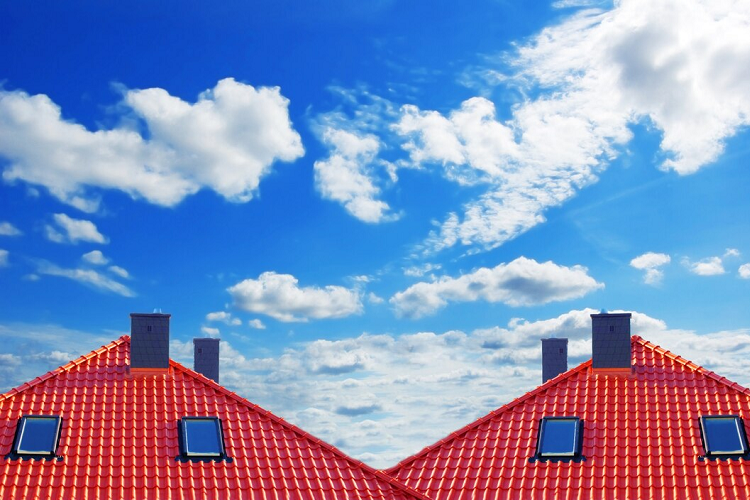You are getting tired of the old roofs and thinking of changing the roofs, although changing roofs is a very challenging decision that people make. Unfortunately, most homeowners don’t know the importance of roof ventilation and do not know much about roof ventilation and its types.
Roof ventilation plays a significant role in maintaining the temperature of the room. Proper ventilation is not just a luxury, it’s a basic necessity in everyone’s life. Poor insulation can lead to many losses like energy loss, health hazards, ice dams, and a lot of other different diseases. Here we discuss why roof ventilation is important and what are the best practices for roof ventilation.
What is Roof Ventilation?
Roof ventilation is a system that allows the air to circulate in the atmosphere to keep the house attic comfortable. Without proper roof ventilation, the hot air gets trapped within your home and causes many problems. Improper ventilation can also lead to heat on the roofs, which damages the overall structure of the roof.
Why is It Important?
The roof ventilation system is very important to prevent the roofs from overheating. It helps to regulate the temperature and moisture levels.
The roof ventilation also prevents mold growth. Mold growth not only damages the structure of the roof but also poses many health risks.
How does Roof Ventilation Work?
The roof ventilation works on the principle that air from the lower side of the roof takes air and the upper side of the roof exhausts the air.
There are two main types of roof vents.
Intake Vents
Intake vents are a type of roof vents. The intake vents help to draw the air through your roof for proper ventilation and make sure that the air in your home is not overtaken or contains any toxic contaminants. The intake vents are located at the soffit or in ridge vents along the roof peak.
Exhaust Vents
The exhaust vents allow the stale air to exit. These vents are located near the roof peaks, gables, or ridges. The exhaust vents allow the hot, humid air outside from the attic.
15 Tips to Boost Your Roof Ventilation
Balanced Intake and Exhaust
The combination of both intake and exhaust vents is the most efficient roof ventilation system. This keeps hot or humid air from becoming trapped and guarantees a balanced airflow throughout the attic area.
Proper Placement
It is an excellent habit to set the vents correctly. To allow fresh air to enter, the intake vents should be positioned on the side of the roof that is lowest. The vents for exhaust are situated higher up. The warm air can escape as a result. Natural ventilation is encouraged by this configuration.
Proper Sizing of the Roof
It is a very important thing to note that always use proper sizing vents for your attic space. If you use over-sizing or undersizing vents it will not be good for your roof ventilation system. If you don’t know the roof vent size, contact the professionals for proper ventilation sizes.
Choose Quality Materials
It’s very important to choose the high-quality materials that will last so long when installing or replacing your vents. High-quality materials will last longer even though these materials can go through harsh weather conditions. Choose all those materials in ventilation that are made of durable materials such as aluminium and plastic.
Maintain and Inspect Regularly
It is very essential to check your roof ventilation system regularly, to maintain it properly. Maintaining and inspecting regularly can include checking for any kind of blockage or damage, and cleaning out the dust and debris if any that may accumulate in the roof ventilation.
Install Soffit Vents
The roof soffit vents are installed along the underside of the eaves allowing the fresh air to enter the attic. If you install roof vents it will prevent you from costly damage to the roof, and also change the look of the roof.
Use Ridge Vents
The ridge vents are placed at the peak of the roof allowing the air to exhaust. These roof ridge vents play an important role in maintaining the health of the roof. The ridge vents keep the roof cool providing continuous airflow and when these vents are combined with the soffit vents it enhances its benefits.
Use Gable Vents
The gable vents are found on the outside wall of your attic. The greater overflow is made only possible if you install the gable vents. The gable vents are designed that allow the air in and out of your attic space. The gable roof vents are generally inexpensive and are easy to install.
Use the Attic Fans
It is very essential to use the attic fans in extremely hot weather. The attic fans draw the hot, humid air outside of the attic and prevent the heat buildup in the attic. The attic fans not only give you much-needed ventilation but also improve the performance of the HVAC system. If you install the attic fans, it also reduces the cooling costs in the summer.
Maintain Gutters and Downspouts
This is a very important point that people often forget when it comes to roof ventilation. Ensure that your gutters and downspouts are functioning properly or not, and are crucial for directing the water away from your roof. If the water is drained from your roof it causes damage to the structure of the roof. It is a good practice to regularly clean your gutters and downspouts and make sure that they are free of dust and debris to prevent them from further clogging.
Inspect for Leaks
It is a very good practice to regularly check and inspect your roof for any kind of roof damage or leak. If you notice any kind of these early issues contact the professionals, this will save you money from costly repairs.
Trim Overhanging Branches
If your roof is occupied by branches, this can cause damage to the shingles of the roof, also this creates an access point for the insects. This also blocks the sunlight which can lead to moisture buildup. It is a good practice to regularly trim the extra overhanging branches to prevent them from further damage.
Check Attic Insulation
Proper attic insulation can help regulate the temperature in your home and reduce the workload on your HVAC system, leading to lower energy bills. Make sure your attic is well-insulated and consider adding more if needed.
Utilise Natural Light
Natural light plays an important role in ventilation, instead of using artificial light, take advantage of the natural light. To use this, install skylights or add windows in a strategic location. This natural light increases the room ventilation system, increases fresh air, and ventilates the excess humidity. This not only saves your money and electricity but also gives you many health benefits such as promoting eye health and improving mood and productivity.
Professional Installation is Best
If you want to install the roof it’s best to consider installing the professionals. While some owners may be confident in their skills and they install the roof vents themselves, this ultimately damaged the roof. A professional, trained, and experienced roof contractor can properly place and install the roof and make the proper roof ventilation system.
Effects of the Bad Ventilation
Improper ventilation can have a negative impact on the home in many ways. The most common effect of bad ventilation is that it affects indoor air quality. Improper ventilation causes many serious health diseases, bad ventilation promotes respiratory problems such as asthma, allergies, and bronchitis, and leads to many other diseases.
Moreover, poor ventilation can cause excess moisture to build up in your attic. This leads to the growth of mould. This excessive growth can damage the overall structure of your roof.
Furthermore, inadequate roof ventilation can significantly affect the energy efficiency of your home. A badly ventilated roof can trap heat over hot weather, making it more challenging for your air conditioner to chill your house. This results in higher summertime discomfort levels and higher energy expenses.
Proper ventilation not only enhances the air quality of your home but also contributes significantly to the durability of your roof. Properly vented roofs provide for increased airflow, reducing the risk of moisture buildup and shingle damage.
Conclusion
Installing roof ventilation in your houses and other places is essential. Understanding the many types of roof ventilation systems available can make your selection of the ideal one easier. To enhance the airflow on your roof, adhere to the following recommendations.
Make sure the roof is properly aligned, choose the best roofing materials, perform annual roof inspections, and trim any extra branches that are overhanging. The longevity, comfort, and efficiency of your roof can all be directly impacted by adequate ventilation.
An inordinate amount of health dangers could be encouraged by inadequate ventilation.












